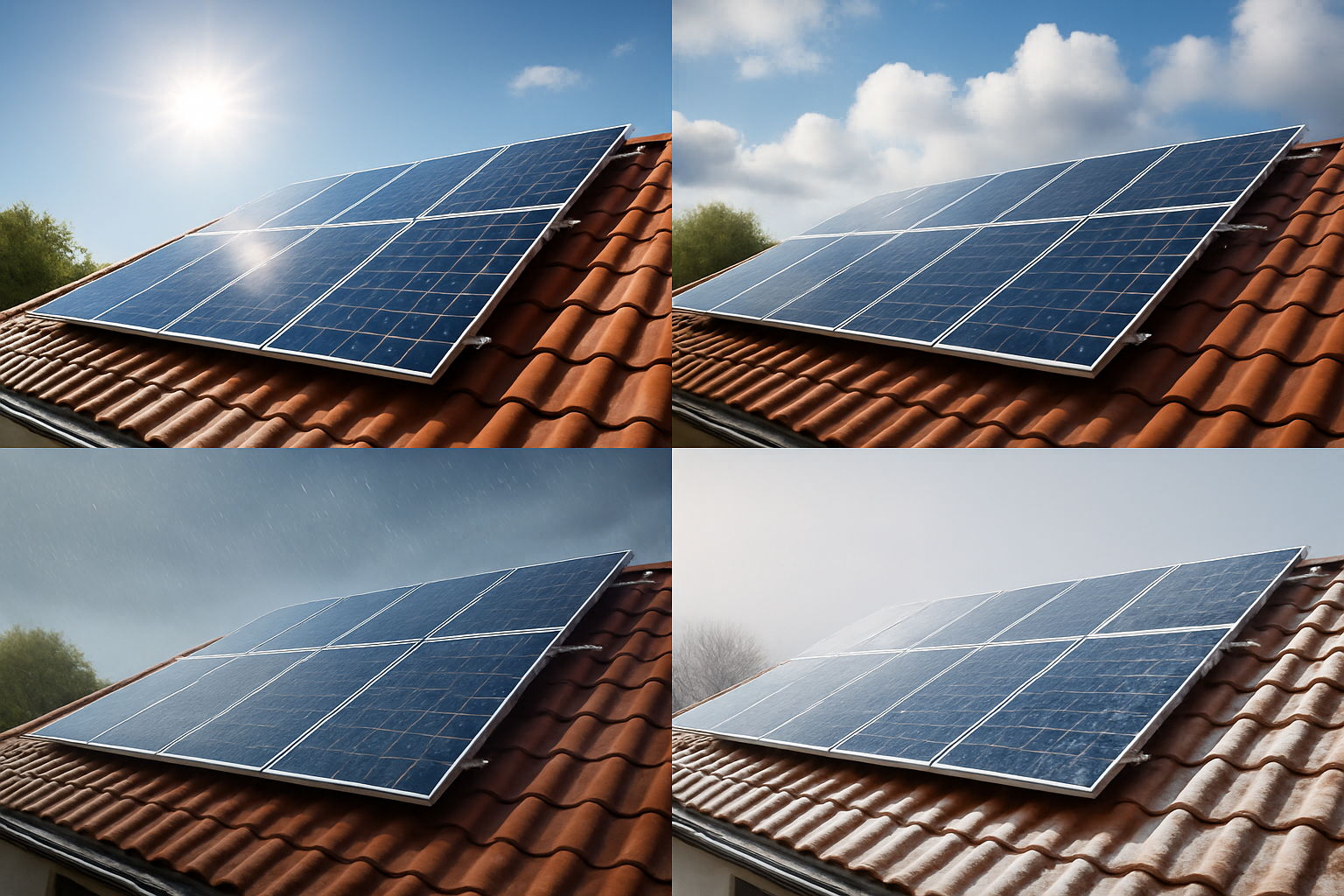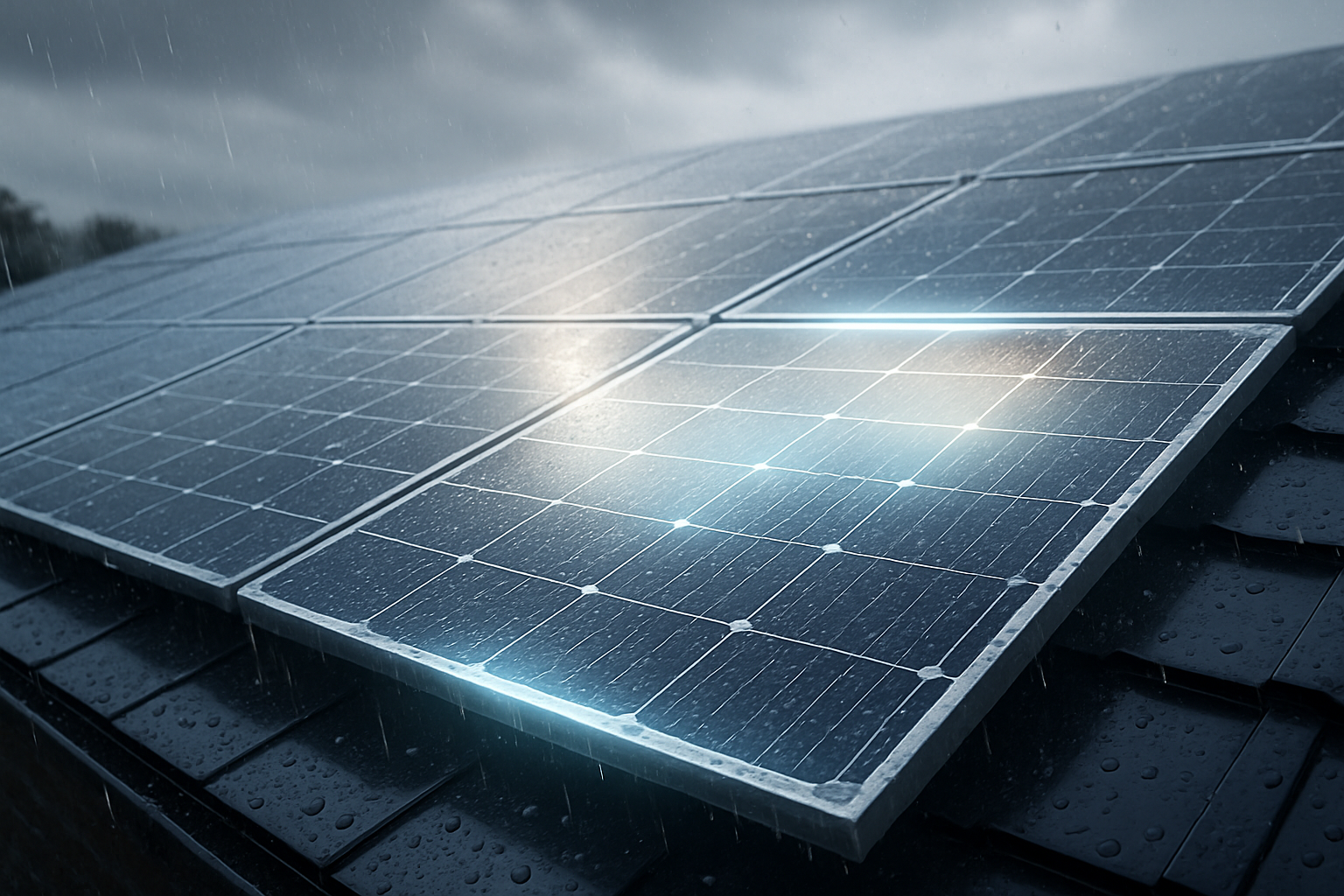Many people wonder about solar energy's effectiveness during colder, cloudier months. The idea of relying on sunshine for power when the sun seems to hide behind clouds can feel daunting. However, with thoughtful design and the right energy storage solutions, you can achieve remarkable energy independence, even in challenging winter conditions. This guide will walk you through building a resilient solar energy system that thrives when the days are short and the skies are gray.
Understanding Solar Performance in Winter
Solar photovoltaic (PV) systems generate electricity from sunlight. Their performance naturally varies with the amount of available light. In winter, two primary factors influence output: shorter daylight hours and increased cloud cover.
The Impact of Clouds and Shorter Days
Winter brings fewer hours of direct sunlight. Additionally, cloudy or foggy days significantly reduce the direct component of solar irradiance, sometimes to nearly zero. The Technology Roadmap - Concentrating Solar Power report notes that on clear days, direct irradiance accounts for 80% to 90% of solar energy reaching Earth's surface. On cloudy days, the diffuse component, scattered by the atmosphere, becomes the primary source of light for PV panels. While panels still produce power from diffuse light, the output is considerably lower than under direct sun.
Temperature Effects on PV Output
While less sunlight is available, colder temperatures can paradoxically benefit PV panel efficiency. PV panels generally perform better in cooler conditions, as high temperatures can slightly reduce their efficiency. However, this minor efficiency gain does not outweigh the significant reduction in sunlight hours and intensity during winter. The primary challenge remains the scarcity of solar irradiance, not the temperature itself.
The Role of Energy Storage
Energy storage is the key to unlocking consistent solar performance, especially during cloudy winters. It allows you to capture and save excess energy generated during sunny periods for use when the sun is not shining.
Bridging the Gap with Batteries
Batteries store surplus solar electricity produced during peak sunlight hours. This stored energy then becomes available during evenings, nights, or extended cloudy periods when PV generation is low. For home energy systems, lithium iron phosphate (LiFePO4) batteries are a preferred choice due to their high performance, safety, and reliability. These batteries offer a long cycle life and stable operation, making them a robust solution for daily energy cycling.
Beyond Electricity: Thermal Energy Storage
While electrical batteries address electricity needs, thermal energy storage can play a crucial role in winter heating. This involves storing heat from solar thermal collectors or excess electricity for later use. The Innovation Outlook: Thermal Energy Storage report highlights various thermal storage solutions, including sensible, latent, and thermochemical systems. A notable example is the Drakes Landing project in Alberta, Canada, which used seasonal underground thermal energy storage (UTES) with solar thermal energy to supply nearly 100% renewable space heating to a residential community. This demonstrates the potential of storing summer heat for winter use.
Designing Your System for Winter Resilience
A resilient solar-plus-storage system for winter requires careful planning and component selection. You need to consider both generation and consumption.
Sizing PV Arrays for Winter Peaks
To ensure adequate power during winter, you may need to oversize your PV array compared to what would be sufficient for summer. This accounts for the lower sun intensity and shorter daylight hours. Electrifying heating loads, such as heat pumps, can also shift peak energy demands to winter, increasing the need for robust winter solar generation and storage capacity. The Solar Energy Perspectives publication notes that while wind power is abundant in winter, PV electricity is more abundant in summer, underscoring the importance of storage to balance seasonal variations.
Battery Capacity Calculation
Determining the right battery capacity is critical for achieving your desired level of energy independence. This involves assessing your daily energy consumption and the number of "autonomy days" you want to cover without grid power or significant solar input. For cloudy winters, planning for several days of autonomy is often advisable. High-performance LiFePO4 batteries are well-suited for this, providing the necessary depth of discharge and cycle life for daily use.
Hybrid Inverters and System Integration
A key component of a modern PV-plus-storage system is the hybrid inverter. These devices efficiently manage the flow of electricity between your solar panels, batteries, and the grid (if connected). They convert the direct current (DC) from your panels and batteries into alternating current (AC) for your home appliances. Integrated home energy storage systems often combine the lithium battery, hybrid inverter, and solar panels into a cohesive unit, simplifying installation and operation.
Load Management and Efficiency
Reducing your energy consumption, particularly during winter, directly impacts the required size of your solar and storage system. Implementing energy-efficient appliances, improving insulation, and optimizing heating schedules can significantly lower your overall energy demand, making your solar investment go further. Passive cooling and heating techniques, such as thermal mass in buildings, can also contribute to reducing energy needs, though care must be taken to avoid under-heating in winter with excess thermal mass.
Key Components of a Home Energy Storage System
| Component | Function | Benefit |
|---|---|---|
| Solar Panels (PV) | Convert sunlight into DC electricity. | Primary energy generation. |
| Lithium Iron Phosphate (LiFePO4) Battery | Store excess solar energy for later use. | High performance, safety, long lifespan, reliable energy reserve. |
| Hybrid Inverter | Manages energy flow, converts DC to AC, integrates PV, battery, and grid. | Efficient energy management, grid-tie and off-grid capabilities. |
| Charge Controller (often integrated) | Regulates voltage/current from PV to battery to prevent overcharging. | Protects battery health and longevity. |
| Monitoring System | Tracks energy production, consumption, and battery status. | Provides insights for optimization, remote management. |
Real-World Applications and Benefits
Implementing a well-designed PV-plus-storage system offers tangible advantages, particularly in achieving energy independence and resilience.
Achieving Energy Independence
With a robust solar and storage setup, you gain greater control over your energy supply. This is especially true for off-grid solar solutions, which provide complete autonomy for homes, farms, or remote cabins. Even grid-tied systems with storage offer significant independence by reducing reliance on utility power, especially during peak demand periods or outages.
Cost Savings Over Time
While the initial investment in a PV-plus-storage system is higher than solar panels alone, the long-term savings can be substantial. By generating and storing your own electricity, you reduce or eliminate your monthly electricity bills. The ability to store energy also allows for strategies like time-of-use optimization, where you draw less from the grid during expensive peak hours.
Contributing to Grid Resilience
Distributed energy resources (DERs) like PV-plus-storage systems can offer benefits to the wider power system. When properly integrated, they can help stabilize the grid, reduce strain on infrastructure, and even provide services back to the utility, assuming appropriate economic signals are in place. As more distributed energy storage becomes common, understanding its interaction with existing retail tariffs is crucial for maximizing benefits for both customers and the grid.

Beyond the Basics: Advanced Considerations
The solar and storage landscape is continuously evolving, with new technologies and management strategies emerging.
Smart Energy Management and Tariffs
Advanced energy management systems, known as Distributed Energy Resource Management Systems (DERMS), can translate customer load patterns and PV availability into grid operations that optimize energy use and minimize bills. These systems, coupled with cost-reflective retail tariffs, allow customers to select energy plans best suited to their DER capabilities. Further research into tariff design and communication can enhance these benefits.
Preparing for Future Energy Demands
As societies move towards electrification, especially in heating, the energy landscape is changing. Scenarios demonstrate that electrifying heating loads could shift net peak loads to the winter for many power systems. Given the lower availability of PV during winter, this transition increases pressure on other generation resources. Designing your system with this future in mind ensures long-term adaptability and efficiency.
Achieving Your Energy Goals
Embracing solar PV with integrated energy storage is a strategic move towards greater energy independence and resilience. While cloudy winters present unique challenges, they are not insurmountable. By understanding the dynamics of solar performance, carefully sizing your system, incorporating reliable battery technology like LiFePO4, and implementing smart energy management, you can build a robust energy solution that provides consistent power year-round. This approach empowers you with reliable, scalable energy, helping you achieve your energy goals and confidently navigate the seasons.





Leave a comment
All comments are moderated before being published.
This site is protected by hCaptcha and the hCaptcha Privacy Policy and Terms of Service apply.